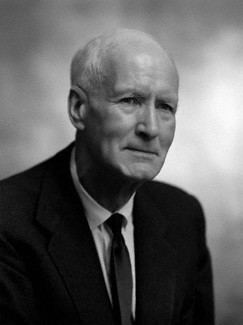Nationality British Known for Sellafield Role Engineer | Name Christopher Baron | |
 | ||
Notable awards Wilhelm Exner Medal (1956)Albert Medal (1957)Rumford Medal (1970)James Watt International Medal (1973)Order of Merit (1976) Died June 22, 1983, London, United Kingdom Books Some Speeches of a Chancellor: Addresses Given by Lord Hinton of Bankside at His Installation as Chancellor of the University of Bath on 10th November 1966 and at Degree Congregations 1967-80 | ||
Christopher Hinton, Baron Hinton of Bankside (12 May 1901 – 22 June 1983) was a British nuclear engineer, and supervisor of the construction of Calder Hall, the world's first large-scale commercial nuclear power station.
Contents
Career
Hinton was born on 12 May 1901 at Tisbury, Wiltshire. He attended school in Chippenham where his father was a schoolmaster, and left school at 16 to become an engineering apprentice with the Great Western Railway at Swindon. At 22 he was awarded the William Henry Allen scholarship of the Institution of Mechanical Engineers to Trinity College, Cambridge, where he graduated with a first class honours degree.
Hinton then worked for Brunner Mond, later part of ICI, where he became Chief Engineer at the age of 29. At Brunner Mond he met Lillian Boyer (d. 1973) whom he married in 1931. They had one daughter, Mary (1932–2014), who married Arthur Mole, son of Sir Charles Mole, director-general of the Ministry of Works.
During World War II, Hinton was seconded to the Ministry of Supply and became Deputy Director General, running ordnance factory construction and in charge of the Royal Filling Factories.
In 1946, Hinton was appointed Deputy Controller of Production, Atomic Energy, and in 1954 when the Atomic Energy Authority was formed, was appointed Member for Engineering and Production as managing director of 'Industrial Group Risley' which comprised the Risley headquarters and laboratories at Culcheth, Capenhurst, Windscale, Springfields and Dounreay plus factories at Springfields, Capenhurst, Windscale, Calder, Dounreay and Chapelcross.
Hinton's department was responsible for the design and construction of most of Britain's major nuclear plants, including Windscale, Capenhurst, Springfields and Dounreay. In 1957, Hinton became the first chairman of the Central Electricity Generating Board. He retired in 1964. In 1965 he worked for six months in the Ministry of Transport and afterwards became a Special Adviser to the World Bank. He served as Chairman of the International Executive Committee of the World Energy Conference, 1962–68.
He was created Baron Hinton of Bankside, of Dulwich in the County of London, a life peer, on 28 January 1965, and served as Chancellor of the University of Bath 1966 – 1979. He was appointed to the Order of Merit in 1976.
The Hinton Cup
During his time at the Central Electricity Generating Board he commissioned the Hinton Cup, a piece of silverware that would be presented annually to the power station that displayed good housekeeping in the workplace. The citation to go with the cup reads 'This cup is presented to the Power Station judged to have reached the highest attainment in economy and efficiency of operation and maintenance with particular reference to attractiveness and good housekeeping'.
The cup was first won by Meaford A power station in 1959 and was last won by West Burton Power Station prior to the divestment of the Central Electricity Generating Board.
